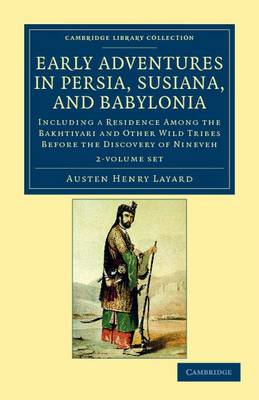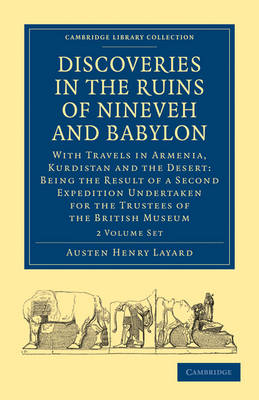Cambridge Library Collection - Archaeology
6 primary works • 9 total works
Volume 1
Volume 1
Early Adventures in Persia, Susiana, and Babylonia: Volume 1
by Austen Henry Layard
Volume 1
Discoveries in the Ruins of Nineveh and Babylon: Volume 1
by Austen Henry Layard
Volume 2
Volume 2
Early Adventures in Persia, Susiana, and Babylonia: Volume 2
by Austen Henry Layard
Volume 2
Discoveries in the Ruins of Nineveh and Babylon: Volume 2
by Austen Henry Layard
Early Adventures in Persia, Susiana, and Babylonia 2 Volume Set
by Austen Henry Layard



